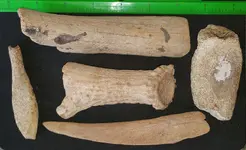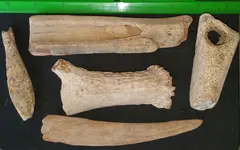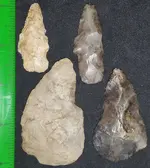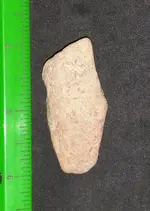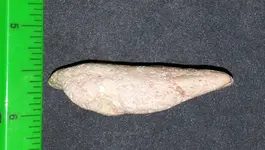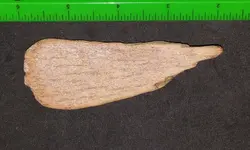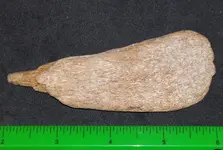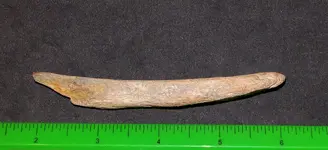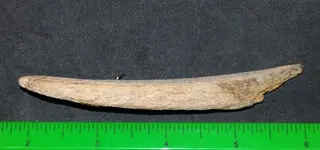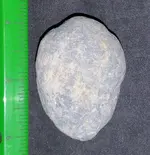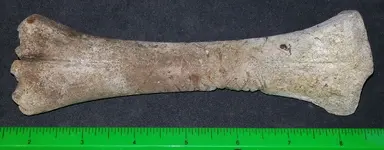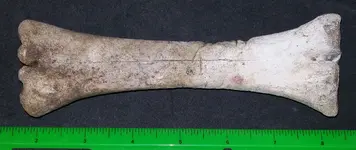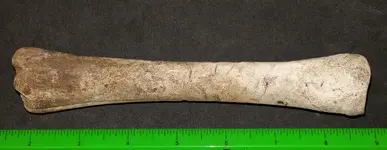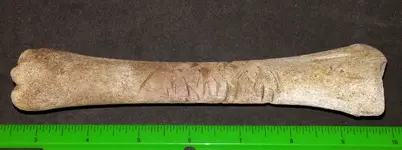texasriverdigger2.0
Jr. Member
- Joined
- Mar 20, 2017
- Messages
- 39
- Reaction score
- 21
- Golden Thread
- 0
- Location
- Freeport Texas
- Primary Interest:
- Beach & Shallow Water Hunting
- #21
Thread Owner
I'm reposting this in here for education and posterity reasons.
Brazos River, Texas
This "bird thing" came out of a working sand pit on the Brazos River 20 yrs ago when a drag line crossed a clay fossil vein. I dug around for a few days and found a few other small black companion bones to this "bird thing", that I can't currently find, in the same layer of Brazos orange clay. It's not a iron nodule. It feels like some type of asphaltum. It has a hard rubber texture and is very light.
I think bird thing floated down here from someplace else just waiting for me to find it and one day post it on Treasure net.
The pit flooded a few months later and is owned by another family today.
I've searched for other bird fossils and profile examples and I've only found a few.
A few more details....
No, it is not pliable at all. It's so light, its kind of brittle. The very tip of the beak broke off years ago after it fully dried. I glued it back on to keep from losing it. And misplaced the companion bones, when I stored it away properly. The other 3 small bones are here someplace.
Yes, it will semi burn with a trace of black smoke and it smells like road tar. (Think bird covered in a oil spill)
It don't float now. It dont totally sink. It holds a bob on the bottom of the sink. That's how it could have floated or tumbled to the Texas coast, me thinks... I think, it floated or tumbled here from someplace else a very long time ago and come to rest in a fossilized clay vein in a sand pit 30 ft deep.
But I'm just a amateur.
And for the record. I went by the Post Office and had bird thing weighed. The lady checked the weight on both scales. It weighs 2.5 oz.
A slice of bread weighs about 1 ounce.
I'm also determined to find out just what type of material it is. Until then....
I also want thank all of you for looking or your time and input, and I will continue to share my fines for education and posterity reasons.
Thanks again from the Brazos river Texas....
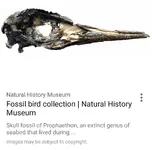
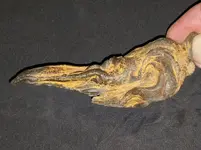
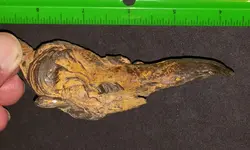
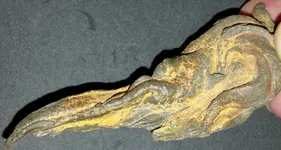
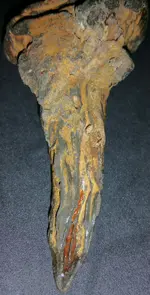
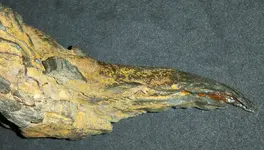
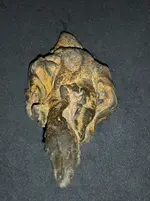
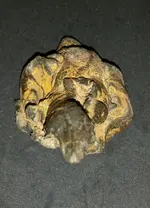
.
Brazos River, Texas
This "bird thing" came out of a working sand pit on the Brazos River 20 yrs ago when a drag line crossed a clay fossil vein. I dug around for a few days and found a few other small black companion bones to this "bird thing", that I can't currently find, in the same layer of Brazos orange clay. It's not a iron nodule. It feels like some type of asphaltum. It has a hard rubber texture and is very light.
I think bird thing floated down here from someplace else just waiting for me to find it and one day post it on Treasure net.
The pit flooded a few months later and is owned by another family today.
I've searched for other bird fossils and profile examples and I've only found a few.
A few more details....
No, it is not pliable at all. It's so light, its kind of brittle. The very tip of the beak broke off years ago after it fully dried. I glued it back on to keep from losing it. And misplaced the companion bones, when I stored it away properly. The other 3 small bones are here someplace.
Yes, it will semi burn with a trace of black smoke and it smells like road tar. (Think bird covered in a oil spill)
It don't float now. It dont totally sink. It holds a bob on the bottom of the sink. That's how it could have floated or tumbled to the Texas coast, me thinks... I think, it floated or tumbled here from someplace else a very long time ago and come to rest in a fossilized clay vein in a sand pit 30 ft deep.
But I'm just a amateur.
And for the record. I went by the Post Office and had bird thing weighed. The lady checked the weight on both scales. It weighs 2.5 oz.
A slice of bread weighs about 1 ounce.
I'm also determined to find out just what type of material it is. Until then....
I also want thank all of you for looking or your time and input, and I will continue to share my fines for education and posterity reasons.
Thanks again from the Brazos river Texas....








.



